English Dub Series Review: Death March to the Parallel World Rhapsody
What could have been a deep universe was boiled in boredom and doused in a sauce of pedophilia and lechery.
Overview (Spoilers)
Ichiro Suzuki was a programmer for a company that made MMORPGs. Despite being darned good at his job, the deadlines were intense, and he sometimes had to sleep over at the office. One time, after doing so, he found himself in a fantasy world that closely resembled a fusion of the two games he had been working on. It even included one of the fixes he had come up with for a beginner area that was far too hard: three free castings of Meteor. Using it not only killed the lizardmen that were after him but a bunch of dragons and a dragon god that was sleeping deep underneath. Now thrust up to level 300, he had more skill points than you could imagine and could spend them any way he chose.
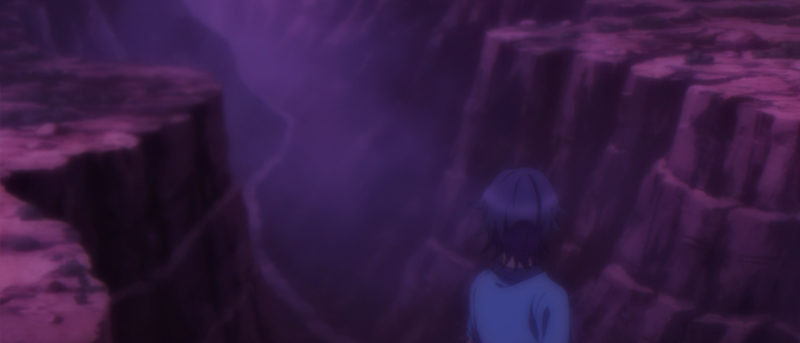
But, he (now known as Satou) quickly becomes aware that this is no dream. He’s really in this fantasy world, and he really is OP. How does he chose to use this power? He hides it, of course, but still uses it on occasion to save damsels in distress. And boy-howdee, there’s a ton of damsels to rescue in this world. Because of his incredible deeds, he continues to acquire slave girls at an alarming rate. Not because he wants to do anything with them, of course. He’s just trying to save them from really bad masters. Yeah. That’s it. He obviously has no libidinous intentions in his body. Despite the fact that he goes to a brothel. Twice. On “Accident”. He learned the Pillow Talk skill there, so don’t think he’s not an active participant.
So, where does the plot go from there? Well, there’s a demon labyrinth he and his slaves fight through. He one-shots a dungeon by himself to rescue a loli elf princess. The gang goes out on the road to take her home, and end up foiling a political plot to take over a witch’s forest… Yup. That’s the series. Exciting, huh?
Our Take
Try again. Death March is a show combining Isyekai and Iyashikei genres. For those of you who aren’t up on these up-and-coming types, Isyekai is about an alternate world. The heroes are people from our world who have been thrust into another and use their specializations from our world to excel. Iyanshikei, or healing, is a subgenre of drama designed to be soothing and to focus on the small pleasures of life. Think Restaurant to Another World. Calm, soothing, minor character drama, focused on eating good food. These two genres are not mutually exclusive, as Restaurant proved. You can build a deep, thriving world and have characters explore them. Here, however, it falls to pieces. Why? Because they combined the wrong aspects of the genres.
For the Isyekai side, they have him within the framework of an MMORPG. Sounds fun enough. The game as a whole, however, is unplayable. We’ll get into that later. The whole point of an MMORPG is the quests, the story, the intrigue, and ACTION. You don’t go into an MMO and don’t expect to get in fights all the time. However, this focus on action is inimical to the concept of Iyashikei. These are supposed to be calm. as Sayaka Ohara said “Nothing happens, but in a good way”. So, the show spends most of its time building up stories with intrigue and mystery, only to have them either go unresolved or slapped down too quick by a deus ex machina. Typically, that Deus is the main character, who can do literally anything he wants to with ease after trying and failing once. The action ends up being far too tame to be interesting. At the same time, the constant build towards excitement make the “healing” portions of the show little more than pointless asides where characters do things that are completely unrelated to the plot. That is, until minutia from those scene are brought back up again as a means of solving problems in the worst possible way. The plot ends up being both mind-numbingly boring and head-scratchingly convoluted at the same time.
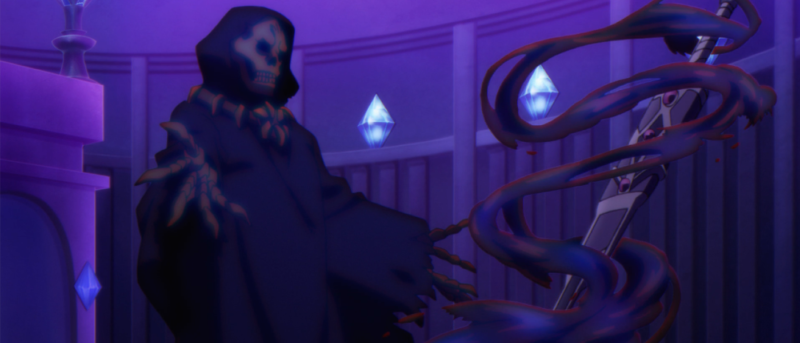
So, what makes the game of this show unplayable? Skill granularity. Let me give you an example. Dungeons and Dragons has a bunch of different actions you can take. Your roll for these actions are modified by a number of skills that you have taken points in. D&D 3.5 had a large array of skills that encompassed an even larger array of actions. In D&D 5, they consolidated many of these skills to have it so that you weren’t having to manage them as much. It made the game experience cleaner and more approachable. The game in Death March, on the other hand, has a skill for every sub-action. That’s right. Rather than have a single skill of acrobatics that modifies most forms of agile movement, this game has separate skills for moving tactically around a battlefield, for parkour, for running across the top of water, for running on rough terrain, for… it goes on FOREVER. Not only that, he doesn’t have the ability to put points into a skill until he’s been the target of it, or tries to do it on his own. That means that he can’t throw stuff unless he fails at throwing something, or someone throws stuff at him. Nobody would play a game with a skill layout like this. It is overwhelming and unnecessarily obtuse.
There was one feature of this show that I initially liked, but ended up despising by the end. Every time he learns or uses a skill or spell, a tooltip appears on the screen. Every time he gets an achievement, we get a notification. These mean nothing. They try to make us think that these are important, but when he learns skills he never uses again, uses skills we never saw him learn, and gains achievements that are requirements for items, only to find out that he doesn’t actually meet the requirement for the item for no reason whatsoever, it becomes obvious that these notifications are only there to give purpose to brainless montages with him and his harem doing off-topic stuff. The final episode relied on him using a skill. He never learned it, but seems to use it just fine. It’s inconsistent, and the writers never bothered to keep track of the over 113 skills that they had him learn.
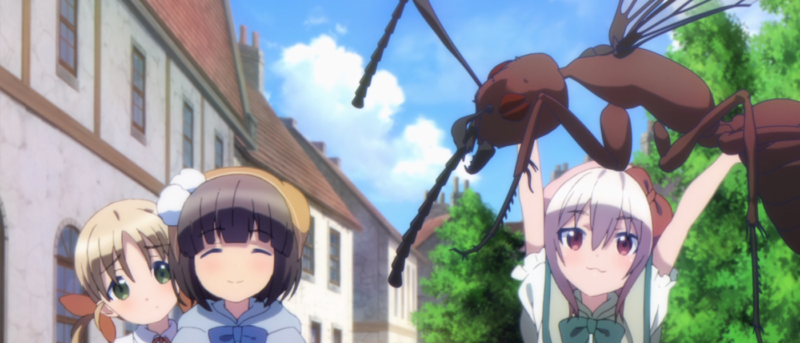
And the reason why becomes obvious by the end of the fifth episode: perverts make terrible writers. From this point on, the series transitions from being a fusion of Isyekai and Iyashikei to being a thinly-veiled harem anime with an even thinner veil on its pedophilia. Not since Clockwork Planet have I seen a show focus so much on prepubescent girls in fanservice situations. One of them actively attempts to rape Satou by using mind control magic on him. As soon as he manages to escape that, she spends the rest of the anime pouting whenever he’s put into a compromising position with any of his seven slave girls, girlfriend, the princess he’s escorting, or the squad of eleven stacked homonculi that also work for him. Oh, and he also makes a loli dryad blossom, if you know what I mean. He does it a bunch of times in one episode. And, when half of the slave girls are underage, you can see where the creator really wants his focus to be. In fact, there are so many girls in his harem, most of them serve no purpose. Lulu, Nana, and one of the pair of Pochi and Tama are completely unnecessary. They do nothing that Lisa, Arisa, and the other of the pair don’t already do. And I mean that from a character perspective. Nana is without personality at all, though she is intended to be like a robot. Lisa is so straight-laced and serious, she might as well be a robot herself. Lulu literally hides in the background, and comes out maybe once in a while for Satou to praise her for nothing. Pochi and Tama are the same exact character, just one is a catgirl and the other is a doggirl. Apparently, though, cat and dog people in this show don’t even look like those two do. They are almost entirely human, while the other demihumans are anthropomorphized animals. The only reason for these two to look this way is… So the writers can have human-like lolis.
The animation on this show is middling at best when we start off. As we continue through the show, the quality of the art and animation tiptoe down until the final episode couldn’t even be bothered to draw a hat the same way twice. There is also an obscene amount of filter used throughout the show, most of which only makes things blurry and ugly. Reference, the skeletal lich in the picture above. The show is pretty liberal with its (crappy) CG. It had a CG model of a horse and carriage. This model gets used ad nauseum. Some of the monsters are obviously CG, and stick out like a sore thumb. It doesn’t add anything to the show, It just allows them to be lazy and not animate certain things. The voice acting is similarly uninspiring. All of the characters have a single trait that they play to the nines every episode. They have no depth in the first place, so it’s not like the voice actors have much to work with. Everyone is just robotic and unemotive.
And, the direction doesn’t save this bad animation either. You don’t have to go far to see what I mean. The opening credits are primarily flashing between images of the girls and shots of the game HUD that Satou looks at. The longer we go into the credits, the faster these images flash until you find yourself flopping on the floor, foaming at the mouth from a seizure. Did someone actually think this was a good opening credits sequence? If so, why are they still working in the industry?
How To Watch
It’s too boring to be binge-worthy, too intricate to stretch out over time. I’m just gonna have to err on the side of binge so you can get it over with fast. Go over to Taco Bell and pick up a massive drink with your meal. Mountain Dew to stay awake. Just be sure to skip the opening credits.
Score
Summary
This show starts slow, gets slower. It starts with middle-of-the-road animation, and gets worse. It's boring, convoluted, and perverted. The average score for the episodes was 5.6 out of 10. In the end, though, I can't even give it that. It gets 4 out of 10, and it's lucky it gets that.




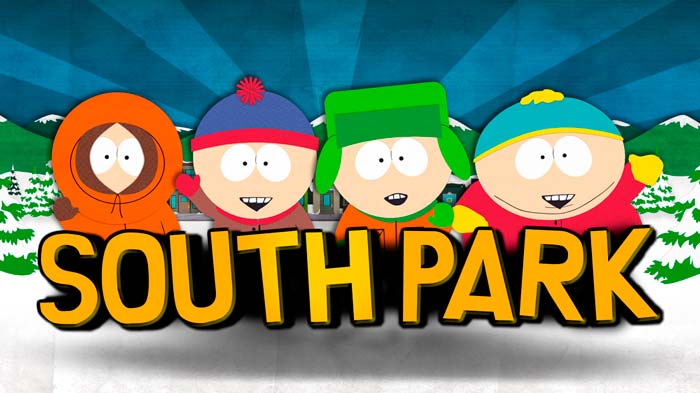
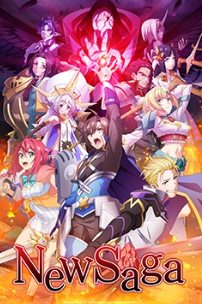










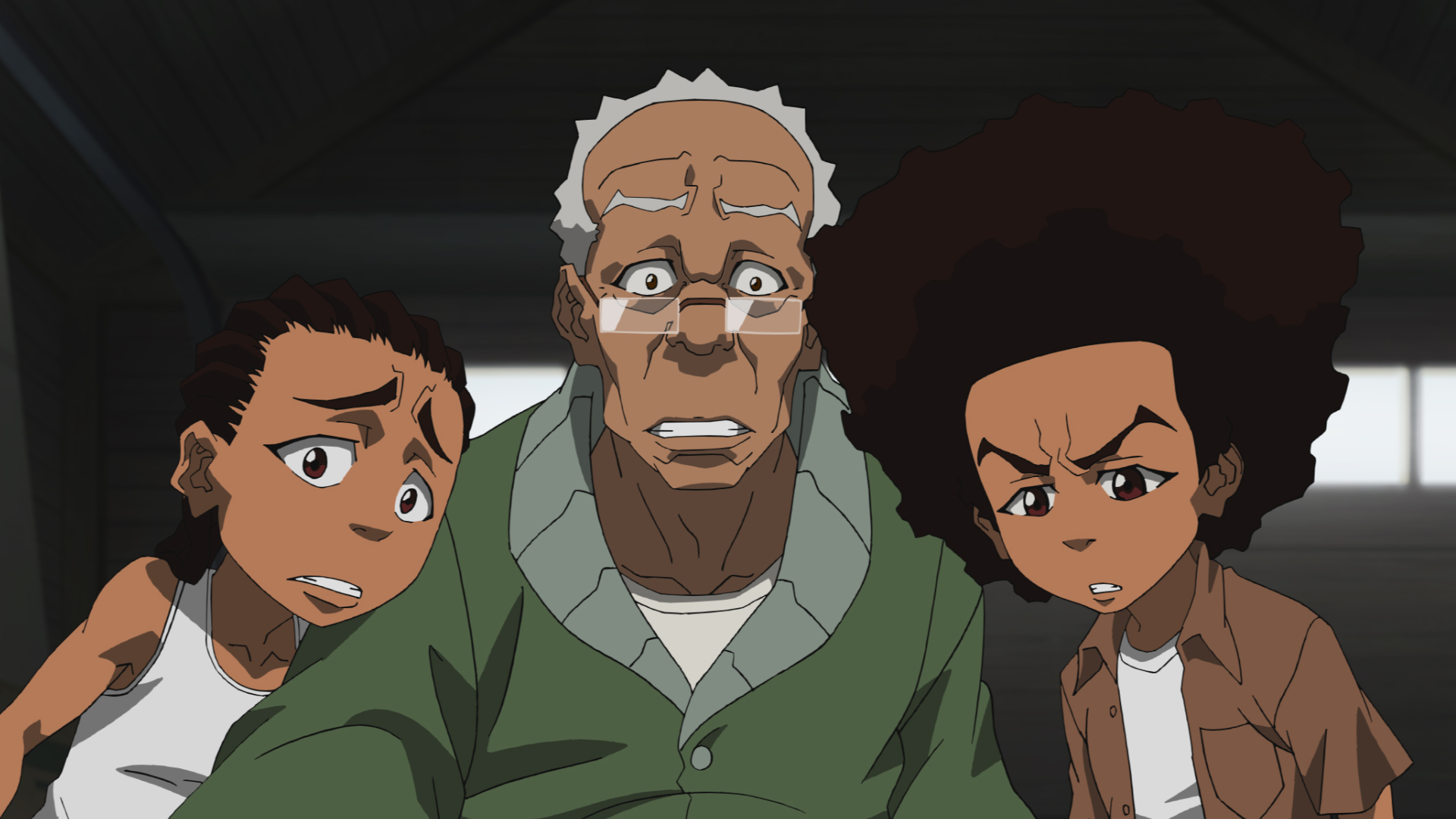





"There are also other characters that come and go (also owned by the Warner Bros. Discovery conglomerate media company)."
Huh. Is that just referring to other characters from the show itself, or is this implying that the new season is going to have cameos from other WBD IPs